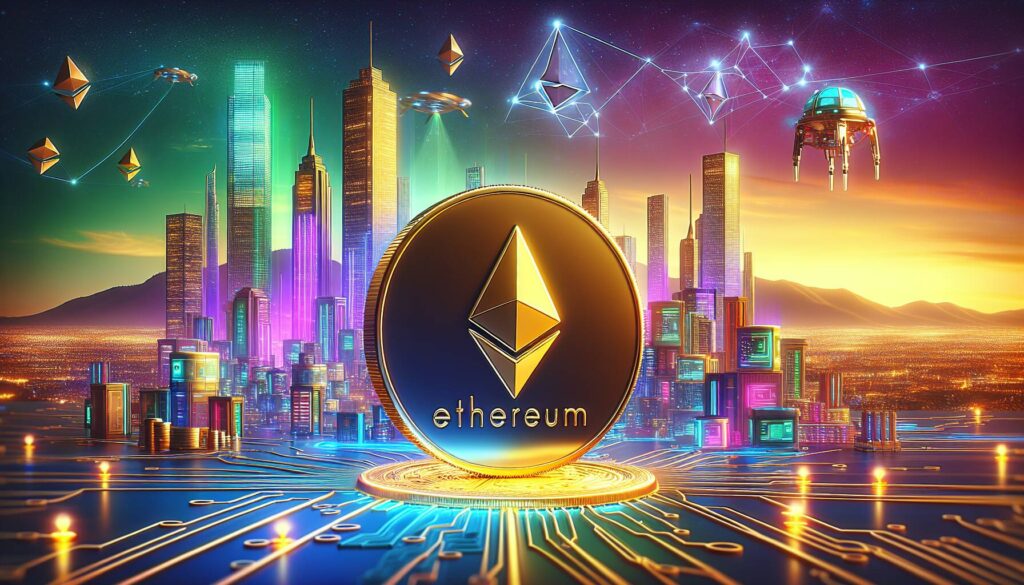Ethereum is experiencing a unique scenario in the cryptocurrency world. Despite ether reaching record highs in late August, activity within decentralized finance (DeFi) on Ethereum’s main network appears to be waning compared to its vigorous peak in late 2021. Fees recorded on Ethereum’s mainnet for August amounted to just $44 million, a significant 44% decrease from the previous month, prompting discussions about its growing disconnect with DeFi activity.
As layer-2 (L2) solutions like Arbitrum and Base flourish—boasting total value locked (TVL) figures of $20 billion and $15 billion respectively—the question arises: is this a sign of L2 networks overshadowing Ethereum’s main network, or is it indicative of a broader evolution in the crypto ecosystem towards a multi-layered financial framework?
AJ Warner, the chief strategy officer of Offchain Labs, offers a more nuanced perspective. He posits that focusing strictly on TVL fails to capture the full story, suggesting that Ethereum is increasingly establishing itself as the “global settlement layer” for significant financial transactions. Recent innovations, including tokenized funds by Franklin Templeton and a product launch by BlackRock, underscore Ethereum’s pivotal role beyond mere DeFi metrics.
Warner likens Ethereum to a “wire transfer” in traditional finance: reliable and secure for large-scale settlements, while everyday transactions migrate to L2s, which provide quicker, cheaper alternatives.
The divergence in activity between Ethereum and L2s highlights significant shifts in the embracing of new technologies. Fast-paced trading strategies and experimental applications thrive in the L2 environment, allowing developers to iterate and innovate at a fraction of the cost. Research analyst Alice Hou notes this growing interest as liquidity providers increasingly gravitate towards L2s in search of better yields and lower transaction slippage.
Interestingly, while L2 networks are bustling with activity, renowned DeFi platforms like Aave and Uniswap still hold strong on Ethereum mainnet, maintaining around 90% of their TVL on the main blockchain.
As user experience is enhanced through wallets and easy fiat on-ramps, newcomers are being directed to L2s, creating a somewhat symbiotic relationship between the layers. The data reflects a healthy mix in the liquidity landscape, suggesting that while Ethereum remains a vital source for liquidity, L2s are carving out their own ecosystems and drawing in a diverse array of assets.
In essence, Ethereum is solidifying its foundations as the secure backbone for the crypto landscape, while L2 networks like Arbitrum and Base are emerging as dynamic, agile platforms for innovative DeFi solutions, reshaping how we understand transactions in this evolving digital world.

Ethereum’s Layered Financial Architecture
The current state of Ethereum presents a complex landscape of decentralized finance (DeFi) and its evolution through layer-1 (L1) and layer-2 (L2) solutions.
- Record Ether Prices vs. DeFi Activity
- Ether reached record highs, despite a significant drop in DeFi activity on Ethereum’s mainnet.
- Fees on Ethereum’s mainnet dropped to $44 million, a 44% decline from the previous month.
- Rise of Layer-2 Networks
- Layer-2 networks like Arbitrum and Base are gaining popularity with total value locked (TVL) reaching $20 billion and $15 billion.
- Layer-2s are designed for faster, cheaper transactions, attracting more everyday users and traders.
- Ethereum as a Global Settlement Layer
- Ethereum is viewed as the secure base for high-value financial instruments and institutional activity.
- Significant projects like Franklin Templeton’s tokenized funds are built directly on Ethereum L1, demonstrating its foundational role.
- Shift in DeFi Strategy
- Fast-paced trading strategies are more feasible on L2s due to quicker transaction finalization, unlike Ethereum’s slower processing.
- Liquidity providers are increasingly favoring L2s for better yield incentives, while larger providers still prioritize Ethereum’s security.
- Innovation and User Experience
- Layer-2 networks serve as a testing ground for new DeFi innovations, allowing for low-cost iterations before broader application.
- Improved user interfaces and direct access for newcomers to L2s support broader adoption and engagement.
- Non-Zero-Sum Ecosystem
- Ethereum still plays a vital role in providing liquidity for L2s, creating a multi-layered ecosystem rather than a zero-sum scenario.
- The hybrid model of liquidity sources, with different pathways for DeFi engagement, underscores the co-dependence of L1 and L2 innovations.
“Most payments I make use something like Zelle or PayPal… but when I bought my home, I used a wire. That’s somewhat parallel to what’s happening between Ethereum layer one and layer twos.” – AJ Warner, Chief Strategy Officer of Offchain Labs
The Evolution of Ethereum: Layer-1 vs. Layer-2 Dynamics
In the cryptocurrency landscape, Ethereum stands at a significant crossroads, facing competition from its layer-2 counterparts like Arbitrum and Base. While Ethereum has seen record prices for ether, its decentralized finance (DeFi) activities on the original layer-1 network are waning, with total fees collected plummeting significantly. This situation highlights a paradoxical trend as layer-2 solutions blossom, attracting the majority of DeFi activities with their enticing efficiency.
Competitive Advantages of Layer-2 Networks: Layer-2 solutions present compelling advantages over Ethereum’s mainnet. With a surge in total value locked (TVL), Arbitrum and Base are not just attracting users but revolutionizing the DeFi experience. These networks offer transactions at lightning speed and reduced costs, catering specifically to high-frequency trading needs that often languish on a slower layer-1. Moreover, they create a testing ground for innovative features and functionalities, allowing starting projects a less risky environment to thrive before potentially migrating to the mainnet.
For developers and traders, the allure of lower fees and faster confirmation times cannot be overstated. Layer-2s demonstrate a capacity to handle greater transaction volumes – a crucial factor as the user base continues to expand. This also positively impacts smaller liquidity providers, who are drawn to yield incentives and favorable slippage, offering a pathway to enhanced returns amidst an increasingly competitive environment.
Disadvantages and Risks for Ethereum: While Ethereum continues to anchor the crypto ecosystem, its waning DeFi engagement raises concerns about its long-term viability as a standalone platform. The high costs and slower transaction times drive users away, leading to a potential erosion of its market share. Furthermore, as top DeFi protocols such as Aave and Uniswap move some of their activities to layer-2 solutions, the narrative surrounding Ethereum’s centrality could be challenged. This dual-layer ecosystem might lead to questions regarding Ethereum’s relevance, as layer-2 networks establish their unique identities and ecosystems.
Who Stands to Benefit or Face Challenges? Institutional players and large liquidity providers may still find solace in Ethereum’s authoritative security and deep liquidity. However, smaller traders and innovators are likely to gravitate towards layer-2 platforms, marking a potential shift in user dynamics. As sophisticated DeFi strategies become more feasible on platforms like Arbitrum, users can capitalize on the capabilities that the layer-2s afford without waiting for lengthy transactions. Conversely, if Ethereum fails to evolve its framework to match the growing demands of its user base, it runs the risk of becoming antiquated—a fate that could stall its innovation pipeline and diminish its appeal.

















